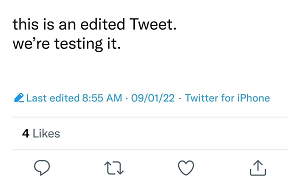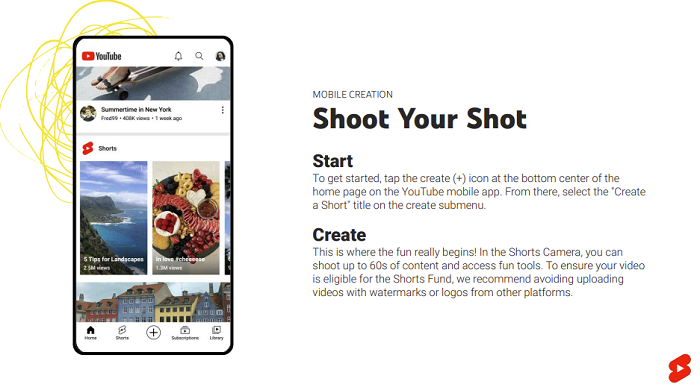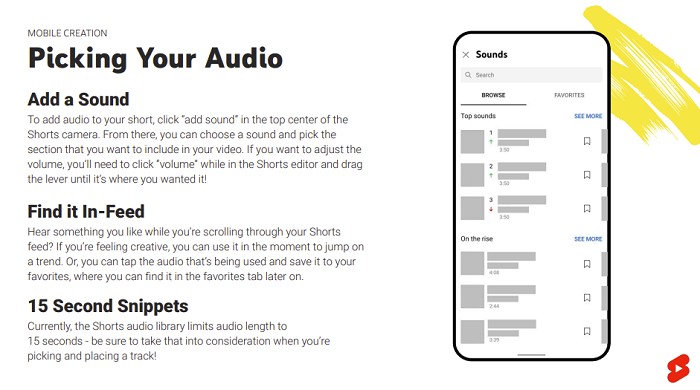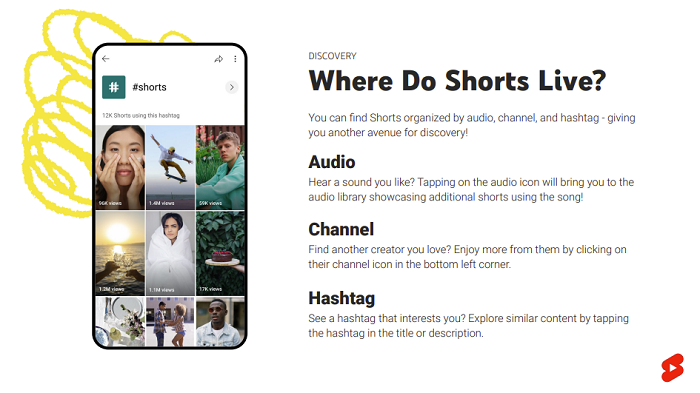Welcome back to our News of the Week section! This time we’re digging deeper into these cases:
Tweet Editing Is Finally Here (Almost)
Meta Is Sharing New Insights On Its Video Distribution Algorithms
And
YouTube’s Own Guide To Using Shorts
Tweet Editing Is Finally Here (Almost)
Finally, the day has come (or is, rather, coming in a short while) when we can finally edit tweets. This is probably the longest-awaited and most-requested update on any social media ever. And now it’s in live testing mode.
All the edited tweets will include a note that it has been edited, and users will be able to access edit history by clicking on the pencil icon. This should lessen the concerns about misuse of such an option – that’s why Twitter was so reluctant to add an editing option in the first place.

The testing is now being done with internal staff only, but the pool will soon be expanded to Twitter Blue subscribers. Here’s a quote from Twitter’s official statement:
“For this test, Tweets will be able to be edited a few times in the 30 minutes following their publication. Edited Tweets will appear with an icon, timestamp, and label, so it’s clear to readers that the original Tweet has been modified. Tapping the label will take viewers to the Tweet’s Edit History, which includes past versions of the Tweet.”
So, tweet editing won’t be available indefinitely, and you’ll have to act fast if you see a lame typo in your witty reply to someone else’s witty response. You’ll also be able to edit any links, videos, or photos added to your tweet. And although, for now, this option will only be released for Twitter Blue subscribers (that’s $4.99 per month), it is promised that the editing option will be available for everybody, free of charge.
Meta Is Sharing New Insights On Its Video Distribution Algorithms
You might’ve noticed that Meta is all about video content these days, emphasizing Reels. In fact, Reels take up more than 20% time that people spend on Instagram, and video content on Facebook takes up to 50%. So, it is truly no surprise that Meta is consistently pushing for Reels and videos to be utilized even more by its platform users.
Of course, Meta’s not the one to keep its users in the dark (not really, though), so they’ve published an article listing all the aspects their algorithms rank your content by. Meaning, that if you comply with their rules, your videos will reach as many users as their potential allows.
And the ranking goes by these categories:
- Originality – the content should be unique, and Meta’s official stance is about rewarding hand-crafted material. So, meme reposts are a no-no in their eyes, obviously;
- Viewing behaviors and video attributes – with this aspect, Meta is telling creators to publish longer videos (three minutes and more) that ‘inspire people to keep on watching.’ They also dislike videos that ‘feel like slideshows.’;
- Loyalty and intent – now, this might sound a bit cryptic, but all they want to say is that videos that enticed people to visit your page more than once are very likely to be distributed more widely. They also stress optimizing your videos for Facebook with clear titles;
- Engagement – Meta promises to promote videos that ‘inspire meaningful and polite discussions,’ are shared authentically, and garner loads of reactions;
- Monetization – if you wish to make money out of your content (and let’s be honest – who doesn’t), you should meet their eligibility standards and make sure your in-stream ads are thoroughly optimized.
So, as you can see, Meta’s talking loads about inspiring people, yet their guidelines slowly veering off the road of creativity and more into the lands of strict rules you should obey to reach people with your content.
But hey, at least they are giving us the guidelines! And if you’d like to read Meta’s own publication, the link is here.
YouTube’s Own Guide To Using Shorts
YouTube’s Shorts are seemingly gaining momentum on the platform. As of now, more than 1.5 billion people (that’s 75% of all the platform’s users) are engaging with the Shorts content each month. So undoubtedly, it is a powerful tool and one that content creators should utilize. To make it all easier, though, YouTube published a comprehensive guide (31-pages long at that – you can download it here) on how to create Shorts, and we’re sharing the essentials with you.
First off – basic overview:

Then a little bit of info on advanced editing:

Then, some pointers on including music and sounds in your videos:

Also, some info on how the Shorts are promoted to users:

And lastly, there’s a whole range of trends and tips:

So, although YouTube’s guide is a lengthy read, there’s definitely some very interesting information provided. And if you’re thinking of adding this kind of content to your roster, you should definitely check the full version that you can download here.
And that’s it! Thanks for reading our take on Social Media News of the Week, and see you next time.





